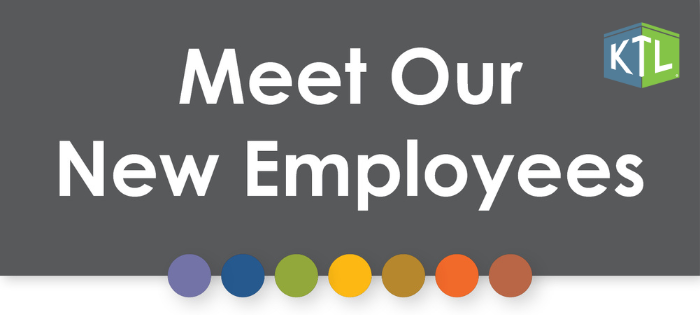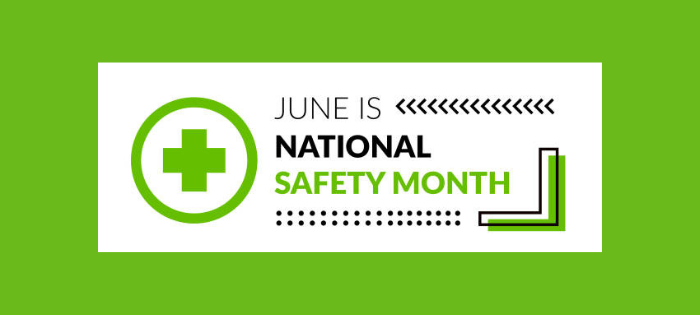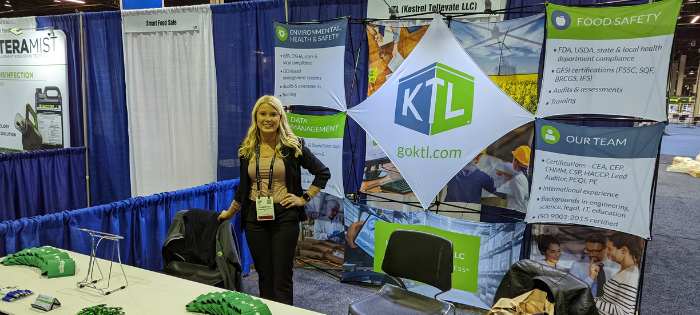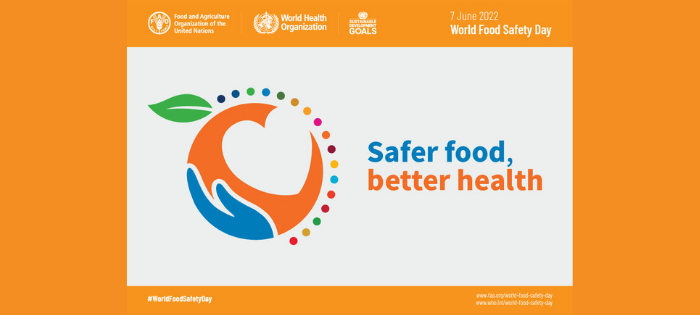
KTL News: New EHS Resources
KTL is pleased to welcome the following new EHS resources to our team!

Christen Hoffman, Senior Consultant
Christen is an EHS professional with over ten years of industry experience providing EHS compliance management, leadership, and support for industry. She is particularly skilled in company culture, environmental risk management, streamlined compliance systems and associated training programs, annual reporting, root cause analysis, hazardous waste management, and air quality compliance. Christen also excels at using digital innovation (Microsoft 365 and SharePoint) to maximize the value efficiency of EHS programs. Christen is based in Ames, Iowa. Read her full bio…
choffman@goktl.com | 913.306.7023

Sam Lechnir, EIT, Consultant
Sam joins KTL with nearly five years of experience working in both the public and private sectors to provide environmental compliance and remediation services. In particular, he has strong experience using state and federal regulations to develop permit applications; employing investigative methods with various media; conducting data assessments/evaluations; and implementing remediation technologies. As a certified EIT, Sam has valuable knowledge of the process of engineering and uses this to optimize quality and efficiency on projects. He is based out of our Madison office. Read his full bio…
slechnir@goktl.com | 608.588.5116

Comments: No Comments
June: National Safety Month
Strong safety performance is a cornerstone of any business. Implementing and enforcing health and safety policies and safe work practices is essential to ensure that the organization does not endanger the health or safety of workers, communities, or customers. More often than not, strong safety performance also makes the difference in being qualified to provide services to customers or being able to sustain/expand the business.
June is National Safety Month. Observed annually by the National Safety Council (NSC), the nation’s leading nonprofit safety advocate, National Safety Month focuses on “saving lives and preventing injuries, from the workplace to anyplace.”
Where to Start
This year, NSC has chosen the following weekly topics to highlight during National Safety Month:
- Week 1 – Musculoskeletal Disorders (MSDs): MSDs are a leading cause of workplace injury and cost billions each year in workers’ compensation and lost productivity.
- Week 2 – Workplace Impairment: More than 90% of employers agree that fatigue, mental distress, and stress can cause workplace impairment, in addition to drug misuse.
- Week 3 – Injury Prevention: In 2020 alone, more than four million workplace injuries required medical attention in the U.S., resulting in more than $643 billion in costs.
- Week 4 – Slips, Trips, and Falls: Falls are the second-leading cause of unintentional injury-related death and the most frequently cited standard on the Occupational Health and Safety Administration’s (OSHA) top 10 list for the eleventh year in a row (see below).
OSHA’s Top 10: FY 2021
Beyond the topics NSC has chosen to highlight for this year’s National Safety Month, OSHA’s list of the top 10 most frequently cited standards is an excellent place for any organization to focus their attention. OSHA publishes this list each year to help employers take the appropriate steps to find and fix recognized hazards before they experience a workplace injury and/or before OSHA shows up for an inspection.
OSHA’s top 10 for FY 2021 includes the following:
- Fall Protection, construction (29 CFR 1926.501)
- Respiratory Protection, general industry (29 CFR 1910.134)
- Ladders, construction (29 CFR 1926.1053)
- Hazard Communication, general industry (29 CFR 1910.1200)
- Scaffolding, construction (29 CFR 1926.451)
- Fall Protection Training, construction (29 CFR 1926.503)
- Control of Hazardous Energy (lockout/tagout), general industry (29 CFR 1910.147)
- Eye and Face Protection, construction (29 CFR 1926.102)
- Powered Industrial Trucks, general industry (29 CFR 1910.178)
- Machinery and Machine Guarding, general industry (29 CFR 1910.212)
Many workplace injuries, illnesses, and deaths that occur in workplaces are related to these top 10 cited standards—and many could be prevented with adequate resources and attention. That is why it remains critical for organizations to continue developing and promoting strong safety and health programs, as well as educating and training workers in safety awareness.
For more information on National Safety Month, visit https://www.nsc.org/workplace/national-safety-month.

Food Safety Summit Recap: Key Takeaways
The Food Safety Summit brings together the food safety community to learn more about today’s most crucial elements of food safety—from regulatory concerns and current industry trends to ongoing challenges and the latest technology and solutions.
This year’s Summit, held earlier in May, proved once again to be an engaging and informative meeting for all in attendance. Throughout the Summit, KTL’s food safety experts observed several common themes and challenges that the food industry is facing — challenges that your business may be encountering today.
We sat down with KTL’s attendees—Roberto Bellavia, Kasia Branny, Samantha Edwards, April Greene, and Joe Tell—to get their key takeaways from the Summit.
What topics were covered throughout the Summit?
The agenda for this year’s Summit was packed. Just some of the topics covered included cybersecurity, internal audits, food waste, food safety culture, foodborne illness, food safety management systems (FSMS), data-driven analytics, tech-enabled traceability, food recalls, microbial challenge studies, supply chain management, and sanitation.
Food safety culture headlined the agenda as the keynote topic this year, and it is clear this is an area garnering much more attention and visibility across the food industry. The keynote address provided the Food and Drug Administration’s (FDA) views on the importance of developing and nurturing food safety culture in the food industry, the industry perspective on implementing successful food safety culture strategies, and the importance of food safety culture through the eyes of the Department of Justice (DOJ).
KTL participated in a panel on virtual tools for food safety assessments. Panelists discussed how organizations are using remote technology to perform food safety assessments, food inspections, product and facility approvals, and similar tasks that are usually performed in person and onsite. The group discussed the practical, procedural, legal, and technology considerations any organization needs to develop efficient and effective remote audit protocols and maximize their potential use of remote tools.
In addition, KTL had a large turnout for our Solutions Stage presentation, Food Safety Management System Case Study: Using Microsoft 365® to Improve Compliance. KTL discussed how having a simple, centralized FSMS to manage, track, communicate, and report compliance program information can enable staff to complete required tasks, improve compliance performance, and support operational decision-making. The big secret: most companies already have the software they need in-house. An industry case study demonstrated a cost-effective approach for building an FSMS using the Microsoft 365 platform with SharePoint®.
What are the biggest challenges companies in the food industry are currently facing?
Not surprisingly, one of the biggest challenges we heard time and again is related to staffing, from turnover in the quality department to being understaffed in production. On a related note, many also noted challenges in finding qualified—and available—auditors. Also not surprising, budget constraints and shortages in the supply chain remain challenges to navigate. It is increasingly difficult to get raw materials for operations and finding truckers to get materials to/from facilities is hampering production.
There remains a lot of focus on the application of new FDA requirements—like Foreign Supplier Verification Program (FSVP) and Food Defense and Intentional Adulteration—and finding good systems to manage all the related documents. While this is not a new rule, supplier approval/verification programs, vulnerability assessments, and written food defense plans will remain a key focus as a surge in food demand and lack of supply has created an environment ripe for food fraud. It is likely that FDA intentional adulteration inspections could also ramp up.
Finally, many companies are experiencing other regulatory bodies (beyond FDA and USDA) taking much more interest in food companies. The Environmental Protection Agency (EPA) and Occupational Safety and Health Administration (OSHA) have started to realize that they have been somewhat lax on inspecting these facilities. 2021 brought a significant uptick in EPA multi-media inspections, enforcement actions, and large penalties for violations, particularly related to anhydrous ammonia storage, risk management, and chemical accident prevention planning. Anhydrous ammonia is widely used as refrigerant in food facilities, including meat, poultry, and fish processing facilities; dairy and ice cream plants; wineries and breweries; fruit juice, vegetable juice, and soft drink processing facilities; cold storage warehouses; other food processing facilities; and seafood processing facilities aboard ships. Not only are companies trying to make do with fewer staff, but responsibilities are growing to include these environmental, health, and safety (EHS) regulatory compliance concerns, as well.
Are there any *new* food safety trends you heard about that companies should have on their radar?
Food safety culture. Food safety culture and its introduction into various certification schemes and regulations is a hot trend that will only grow in importance. Food safety culture is a core element of the FDA’s New Era of Smarter Food Safety. It is also a key component of the GFSI Benchmarking Requirements Version 2020 and, subsequently, is being integrated as a requirement into many of the benchmarked food safety certification standards. Best-in-class food safety cultures have robust systems in place to ensure consistent commitment, communication, procedures, training, performance measurement, and trust.
Cybersecurity. Cybersecurity is moving to the forefront for many. A new law was adopted that requires companies in listed industry sectors, including the food sector, to report to the Department of Homeland Security (DHS) within 72 hours of a cyberattack and within 24 hours if they paid ransom. Implementing regulations will clarify which companies are specifically subject to this reporting. Interestingly, Microsoft SharePoint was mentioned during the Summit as one of the safest technologies for storing and managing information compared to other food safety software from a cybersecurity perspective.
Rapid laboratory testing. Another interesting and very current discussion was about the new micronutrient and chemical analyses that have been developed to quickly test baby formula to help combat the baby formula shortage. There is a lot of opportunity and more “affordable” technology available to set up internal rapid laboratory testing to conduct product and environmental testing.
Data analytics. There is also a big push for usable data. Companies are starting to realize they need to have data they can use in a meaningful way to improve their systems. A well-designed and well-executed food safety program—with data trend analysis—provides an important tool for ensuring food safety. The goal should be to effectively capture and analyze audit data and then use that information to improve food safety and quality, achieve certification requirements, and enhance overall business performance.
Sustainable food management. The regulatory community has identified a real need for addressing food waste and the lack of circularity in the food industry. Wasted food makes up the largest percentage—over 20%—of any one material sent to landfills and incinerators each year in the U.S. The EPA, USDA, and FDA have already joined forces to address the magnitude of wasted food impacts across the U.S. through the U.S. Food Loss and Waste 2030 Champion program. Efforts to promote sustainable food management have begun extending to the state level and will continue.
Supplier expectations. Finally, companies (and customers) are setting higher expectations for the supplier and vendor companies they work with. As a result, more companies are pursuing certifications in areas they may not have previously considered to meet these customer expectations or, sometimes, to work globally. This can include anything from getting certified to various ISO management system standards (e.g., quality (ISO 9001), environment (ISO 14001), cybersecurity (ISO 27001), etc.), or participating in sustainability and corporate social responsibility reporting (e.g., Global Reporting Initiative (GRI), Carbon Disclosure Project (CDP), etc.).
What should companies in the food industry be doing now to plan for the future?
The shortage of workers—and resources, in general—is likely to continue for the foreseeable future. The days where it is typical to see someone at the same company for 25+ years are coming to a close! Managing the complexities of a FSMS and food safety program is challenging, even when fully staffed. Every regulatory agency and voluntary certification standard calls for companies to fulfill compliance requirements; supply chain and internal requirements create further complications and confusion.
One of the best things food companies can do to manage this challenge and plan for the future is to invest in going digital. Compliance efficiency and tracking tools are becoming essential to allow companies to do more with fewer resources. An integrated compliance management system brings various tools together to create one system that effectively manages compliance requirements, enables staff to carry out daily tasks and manage operations, and supports operational decision making by tracking and trending data that is collected daily by the team charged with implementation.

Comments: No Comments
Staff Spotlight on Joe Tell
Get to know our KTL team! This month, we are catching up with KTL Principal and founding partner Joe Tell. In his professional career, Joe has amassed over 25 years of experience providing strategic management systems, subject matter expertise, and technology solutions to help diverse organizations solve their EHS and food safety compliance and sustainability challenges. Joe founded Tellevate LLC in 2011 and was instrumental in the merger of Tellevate LLC with Kestrel Management LLC to form KTL in 2019. He is based in Atlanta, GA.
Tell us a little bit about your background—what are your areas of expertise?
Originally from Des Moines, Iowa, I attended Northwestern University in Evanston, Illinois, and graduated in 1997 with a B.S. in Civil/Environmental Engineering. I began my career as Project Engineer at Law Engineering and Environmental Services (now part of AMEC) and had the opportunity to work on the National Park Service Cape Hatteras Lighthouse relocation and the Atlantic Station steel mill redevelopment site in downtown Atlanta. In 1999, I transitioned to a small consulting firm in the environmental services industry and served as a Partner in that company from 2002 until 2011.
In May 2011, I founded Tellevate LLC as a small business focused on providing sustainability, risk management, and EHS management consulting services for government and industry clients. At Tellevate, I focused on sustainability, EHS, and quality management systems based on the ISO family of standards and the integration of strong compliance programs. In November 2019, Tellevate joined forces with Kestrel Management to form KTL—the business we are today.
As Principal and Chair of the KTL Executive Committee, I now help manage KTL’s business and direct consulting services in sustainability, EHS, food safety, quality, and information management. I have been able to leverage my passion for sustainability to help KTL’s clients improve their environmental and social stewardship.
What types of clients do you work with?
I work closely with many industrial companies, government agencies, universities, and municipalities to support their operations across the U.S and abroad. Notable projects throughout my career have included environmental management system (EMS) design for the U.S. Air Force and Army National Guard; sustainability program development for the U.S. Department of the Interior (DOI); environmental management support for the U.S. Agency for International Development’s (USAID) Bureau for Global Health; pesticide risk assessments for the U.S. Forest Service; and many engagements with a wide range of industrial companies to develop EHS, food safety, quality, and sustainability programs.
What would you say is a highlight of your job?
I love working with our exceptional KTL staff and a wide variety of clients across many industries to develop risk-based programs that improve human health and protect the environment. No two days are ever the same! I also enjoy managing a successful, small business—striving to continuously improve our operations and make KTL a great place to work.
What do you like to do in your free time?
I was a musician in high school and college and still enjoy jamming with other local musicians around Atlanta when I get the chance. I live with my wife (also an Environmental Engineer) and two daughters in Decatur, a small city within the metro Atlanta area that has a great neighborhood feel. You might find us at a festival on the Decatur Square or out to dinner at one of the local restaurants.
Read Joe’s full bio.

Benefits of an Integrated Management System
According to the International Organization for Standardization (ISO), are currently more than 80 Management System Standards (MSS)—80 different standards designed to help companies improve their performance across a diverse range of areas and sectors.
Most companies these days have some sort of management system, whether formal (e.g., ISO, Global Food Safety Initiative (GFSI)-benchmarked standard, industry-specific) or informal. And, because most companies have various aspects and functions to their operations, many actually may have more than one system to organize processes and business objectives.
While management systems by ISO’s definition are designed to “help organizations improve their performance by specifying repeatable steps that organizations consciously implement to achieve their goals and objectives,” having multiple systems to manage often overlapping requirements (i.e., regulatory, certification, supply chain, internal) can create redundancies, inefficiencies, extra work, and overall confusion.
Integrated Management Systems: The Basics
A management system is the organizing framework that enables companies to achieve and sustain their operational and business objectives through a process of continuous improvement (i.e., Plan-Do-Check-Act). It is designed to identify and manage risks through an organized set of policies, procedures, practices, and resources that guide the enterprise and its activities to maximize business value.
A management system should be a means to better align operational quality, safety, environment, food safety, security, energy, etc. with the business. An integrated management system does just this. It aligns an organization’s various systems and processes into one complete framework, enabling the organization to work as a single unit to implement specific best practices organization-wide, fulfill the requirements of multiple standards, and meet a unified set of business objectives.
Integration Business Benefits
Ultimately, the various MSS have many common points—and all work towards the goal of making the organization more effective and efficient. Developing an integrated management system allows organizations to align the standards, find common management system components (e.g., terminology, policies, objectives, processes, resources), and add measurable and recognizable business value, including the following:
Greater consistency. An integrated approach creates greater consistency across business facets when it comes to terminology, processes, procedures, expectations, etc., and, in turn, greatly improved focus on a common set of business objectives. With an integrated system, organizations can ensure that processes, methods, and practices are in place, documented, and consistently applied across the entire organization. A common documented framework such as this helps alleviate duplication of efforts, allows for a more complete view of the functional needs of the entire organization, and reduces variability in performance.
Optimized processes and resources. Integrated systems allow companies to optimize processes and resources and, subsequently, reduce the time it takes to do certain activities. Integrated management systems help organizations to maintain requirements and associated documents concurrently—particularly through use of an information system—streamlining the process and allowing the organization to focus on improvements rather than maintaining multiple systems. A common system enables better use of resources and better collaboration and communication across the company.
More strategic approach. Organizations can take a more strategic approach with an integrated management system because it focuses on managing all aspects of the business, not just one area. It provides clear methods and processes to identify and prioritize risks, set and monitor goals, communicate risks to employees and management, and allocate appropriate resources to mitigate them. It also establishes a common language among managers, executives, and employees, which enables better goal setting, priority ranking, and allocation of resources. As a bonus, integrated systems also make it much easier to implement an organization-wide information system capable of tracking and reporting on common activities and key performance metrics.
Forward-thinking. More and more organizations are expecting more from the companies they work with—and that includes management systems. The push for best practices over just regulatory compliance is a growing trend. Reliable and effective regulatory compliance is commonly an outcome of consistent implementation of a management system. Beyond that, an integrated management system allows organizations to more effectively manage those risks (i.e., compliance, financial, legal liability, brand reputation) that can significantly impact the entire supply chain.
Help from the Standards
Standards organizations such has ISO are making it as easy as possible to implement an integrated management system—whether formal or informal—because, plain and simple, it just makes business sense. For example, ISO has adopted a Harmonized Structure (formerly known as High-Level Structure) to make sure every ISO MSS is structured in the same way with ten universal sections. The ISO MSS also use Annex SL, which dictates how the MSS should be written and, again, is consistent across the various MSS. These efforts simplify use, streamline protocol, and encourage standardization across the ISO MSS.
Beyond that, ISO has published a Guide to Integrating Management System Standards (revised in 2018) to help organizations implement integrated management system design—ISO or not. According to Michael McLean, Convenor or the ISO working group that developed the handbook, “Many organizations benefit from multiple management systems to help them ensure their systems and processes are in line with their objectives and help them maintain their business model through ever-changing environments. This handbook provides a practical guide for organizations to effectively align their management systems with their strategies, plans, and operations.”
Taking the Next Steps
If you are operating with multiple management systems—or even if you have no management system at all—there are some basic steps to creating an integrated management system:
- Invest the time to understand the current scope of operations, functional departments, compliance requirements, governance structure, etc. across the entire organization as a whole, not just siloed departments.
- Conduct a gap assessment to evaluate the current (“as-is”) condition of any formal or informal management system(s) against the desired (“to-be”) condition (e.g., ISO, GFSI, industry-specific).
- Create a development and implementation plan outlining tasks and resources required to close any identified gaps and achieve those objectives.
- Determine key components of the integrated management system required to achieve business objectives.
- Identify common elements to be standardized and incorporated into an integrated system (e.g., policies, procedures, processes, metrics, training).
- Determine what information technology can support and streamline an integrated management system.
- Provide relevant training to all interested parties to truly operationalize the management system across the organization.
Whether formal or informal, integrated management systems provide organizations—both big and small, in any industry—a pillar for sustainable growth. By developing and implementing an aligned management system, organizations can achieve more consistent, reliable, and efficient performance across many areas, while adding measurable and recognizable business value.

Comments: No Comments
World Food Safety Day: Safer Food, Better Health
On June 7, countries around the globe will celebrate World Food Safety Day, focusing this year on “Safer food, better health” as the theme. Established by the United Nations General Assembly in 2018, World Food Safety Day is an annual observation intended to mobilize action to prevent, detect, and manage foodborne risks and improve human health. The World Health Organization (WHO) and the Food and Agriculture Organization (FAO) of the United Nations jointly facilitate the observance of World Food Safety Day.
According to WHO, foodborne diseases affect 1 in 10 people worldwide each year. Safe food is a key contributor to reducing these foodborne illnesses and other poor health conditions, including impaired development, micronutrient deficiencies, noncommunicable and communicable diseases, and mental illnesses. Only when food is safe can we fully benefit from its nutritional value.
Everyone has a role to play in food safety—whether we grow, process, transport, store, sell, buy, prepare, or serve food. The way we build food systems and how we organize food supply chains can help achieve safer food for better health.
WHO is calling on everyone to join in World Food Safety Day to ensure safe food for all. Check out the Guide to World Food Safety Day to learn more about how various stakeholders can promote safer food and better health on World Food Safety Day this June 7 and every day.

Comments: No Comments
Doing Your Due Diligence: Food M&As
Any mergers & acquisitions (M&A) transaction, no matter the size or structure, can have a significant impact on the acquiring company—and food safety is a critical factor. As KTL reported in our Food Safety: Top Trends to Watch in 2022 article early this year, we are seeing more and more private equity firms investing in food companies and, subsequently, in evaluating their food safety infrastructure to determine the potential risk and overall value of the acquisition.
An assessment of the operations, production processes, equipment conditions, food safety management, quality, regulatory compliance, and all related documentation needs to be completed as part of any food-related acquisition. Prior to any acquisition, it is important to determine:
- Condition of operations (i.e., personnel, equipment, processes, facility) necessary to effectively meet existing performance standards.
- Level of food safety compliance to regulatory requirements and applicable voluntary industry certifications.
- Any potential high-level risks that would impact the transaction.
What to Expect
A food safety and quality assurance (FSQA) due diligence assessment should focus on a review of food safety and management practices, regulatory compliance, and overall level of implementation of FSQA processes to identify potential impacts to a planned investment. In general, it involves reviewing FSQA processes and procedures compared best practices in the industry, including:
- Compliance with Food and Drug Administration (FDA), U.S. Department of Agriculture (USDA), and other state and local regulations, including environmental, health, and safety (EHS).
- Programs and practices to manage Global Food Safety Initiative (GFSI) certifications (i.e., SQF, FSSC 22000, BRCGS, IFS), if applicable.
- Condition of operations (i.e., personnel, equipment, processes) necessary to effectively meet identified performance standards.
- Procedures and ability to ensure food safety during and after the transaction and any potential planned construction/moves.
- Capacity to appropriately and efficiently respond to customer complaints and the implementation of related corrective actions.
- Ability to effectively manage risks associated with the supply chain.
Due Diligence Approach
A typical FSQA due diligence assessment will include the following activities:
Review of documentation. All documents (e.g., policies, plans, standard operating procedures, forms, monitoring records, etc.) must be reviewed to identify potential gaps with applicable requirements and high-level FSQA risks. If construction and/or moving to a new facility is part of the acquisition, production plans, designs, and transition processes and plans for the new facility must also be reviewed to assess the level of effort and costs associated with getting the new plant operational.
Facility and programs implementation evaluation. An onsite assessment allows for facility tours, interviews with key staff, and “boots-on-the-ground” review of:
- Program elements for level of development, compliance with applicable regulatory requirements, implementation integrity, organizational resources, and management support and commitment.
- Operational processes and conditions related to the handling, storage, production, and distribution of products.
- Key building, equipment, process, and controls components, condition, and functionality as they relate to potential food safety or EHS risks.
- Disclosure and verification regarding the handling of ingredients, labeling, and packaging.
- Food safety and EHS regulatory compliance history and potential risks (e.g., recall programs and new FDA regulations implementation).
Written report. In most cases, the final deliverable will be a written report documenting assessment activities and results, including operational conditions, major FSQA risks, and review of facility plans. The written report should include actionable items that will allow the investor to make informed decisions regarding the acquisition, as well as potential future remediation and/or improvements to existing programs. Typical reports should include:
- Results of documents and records reviews, with trends analysis
- Identification of positive practices
- Regulatory compliance concerns and performance history
- Food safety and EHS risks
- Opinion on priority, transition, and feasibility of production startup timeline considering food safety requirements
- Recommendations for improvement
Smooth Transition
Undertaking adequate due diligence in any M&A activity is vital. It can lead to the discovery of regulatory inconsistencies that may lessen the value of an entire product line or business—and opportunities to make improvements. It can provide better insights into the risks and potential benefits of a transaction. And, ultimately, thorough due diligence can help ensure a smoother, more effective, and sustainable business integration.

Comments: No Comments
Staff Spotlight on Lisa Langdon, PE
Get to know our KTL team! This month, we are catching up with KTL Principal Lisa Langdon, P.E. Lisa provides project direction and strategic oversight to ensure the success of KTL’s projects and satisfaction of our clients. She has over 25 years of experience assisting clients with management system design and deployment, business process improvement, risk management, and compliance assurance. Lisa also manages KTL’s team of consultants and support staff. She is based out of our Madison, WI headquarters.
Tell us a little bit about your background—what are your areas of expertise?
I have my degree in Civil Engineering with an environmental emphasis from the University of Wisconsin-Madison. I began my career in California, primarily doing solid waste engineering work. During that time, I became a registered Professional Engineer.
With my Midwestern roots, we moved back to the Madison area, and I began working at what was then known as Kestrel Management Services (now KTL). I wanted to transition into helping companies manage their environmental risks—beyond just remediating their environmental compliance issues. This has been the focus of my career for the past 20 years at KTL. I work primarily on management system design and deployment, business process improvement, risk management, and compliance assurance. In particular, my areas of expertise include analyzing EHS and other business processes and identifying and implementing improvement opportunities to ensure compliance and enterprise risk reduction.
In 2014, I took partial ownership of KTL and am now currently a principal owner and member of KTL’s Executive Committee. In this role, I continue to provide executive-level project direction and oversight, manage client relationships to effectively meet needs, oversee internal processes and systems, and manage KTL’s technical operations and staff.
What types of clients do you work with? What are the biggest issues you see them facing right now?
I have worked for a wide variety of companies ranging from a Class I railroad, to utilities and chemical companies, to municipal departments. While the majority of our projects involve solving issues and looking for opportunities to improve EHS and food safety compliance, we can help provide process improvement and risk reduction services to any type of organization. As a very recent example, we will use our systems analysis approach to work on a government-funded project in cooperation with pharmacy chains to develop strategies to improve access to medications for Opioid Use Disorder (OUD). While the industry and compliance issues are different, KTL’s overall approach on this project remains the same.
As for the biggest issues I see right now, I think it is safe to say that many of our clients continue to struggle with finding and retaining quality staff. KTL continues to help many companies fill this hole by supporting their EHS or food safety departments to ensure ongoing compliance requirements are met. We also see many companies still working to manage the new “hybrid” work situations that have emerged from COVID. KTL’s work related to information management systems has grown as more and more companies need improved access to and control of information, regardless of where employees are working.
What would you say is a highlight of your job?
In my role, I have the opportunity to collaborate with and oversee our team of experts as they work with our clients to solve some really difficult problems. For example, we have seen an uptick in the number of surprise EPA inspections and enforcement actions over the past several months. In addition to preparing our clients to be “inspection-ready” as part of normal operations, our team has been able to respond quickly to provide resources that support our clients during and after these inspections.
We also have many clients who are working hard to implement best-in-class practices. These projects allow us to be creative in identifying approaches that help these organizations improve their transparency; develop more effective metrics and dashboards; and better align, focus, and manage those initiatives that are core to sustainable business operations.
What do you like to do in your free time?
My husband and I are adjusting to being empty nesters with two daughters now in college and out of the house. We recently bought a canoe and are looking forward to Wisconsin weather warming up enough to use it. I also really enjoy traveling and am continually planning for my next trip.
Read Lisa’s full bio.

Comments: No Comments
EPA’s Strategic Plan for the Future
On March 28, 2022, the Biden-Harris Administration submitted to Congress the President’s budget for fiscal year (FY) 2023 to support the Administration’s agenda to “build a better America, reduce the deficit, reduce costs for families, and grow the economy from the bottom up and middle out.”
Included in this budget is a historic investment of $11.881 billion to advance key priorities in the U.S. Environmental Protection Agency’s (EPA) FY 2022-2026 EPA Strategic Plan, including targeted objectives and outcomes in the areas of climate change; environmental justice; compliance enforcement; clean land, air, and water; and chemical safety.
Unprecedented Commitments
Every four years, EPA issues a Strategic Plan that communicates the Agency’s vision, priorities, and strategies for accomplishing its mission to protect human health and the environment. Since William Ruckelshaus served as the first Administrator of the EPA from 1970 to 1973, the Strategic Plan has been built on three foundational principles: follow the science, follow the law, be transparent.
The FY 2022-2026 Plan renews EPA’s commitment to these principles and adds a fourth to support Biden’s Justice40 initiative: advance justice and equity. Current EPA Administrator Michael Regan describes the EPA Strategic Plan as “bold and unprecedented in its commitment to advancing environmental justice and civil rights and tackling climate change.”
Roadmap to Protecting Human Health and the Environment
In the new Strategic Plan, EPA has established a roadmap to address climate change and environmental justice, in addition to its five programmatic areas of enforcement and compliance, air quality, water quality, land revitalization, and chemical safety. The Plan outlines the following seven long-term performance goals (LTPGs) and related objectives and quantifiable outcome to achieve by 2026.
Goal 1: Tackle the Climate Crisis
EPA is focused on further reducing greenhouse gas (GHG) emissions by promulgating rules to reduce pollution from the power sector, setting vehicle emission standards, and partnering with the public and private sectors communities (especially those underserved and disproportionally at risk) to increase energy efficiency in the residential, commercial, and industrial sectors.
In addition, there is $100 million in grants to support efforts to reduce GHG emissions and increase resiliency in the nation’s infrastructure and $35 million to implement the American Innovation in Manufacturing Act to continue phasing out GHGs.
Goal 2: Take Decisive Action to Advance Environmental Justice and Civil Rights
Environmental justice and civil rights will be embedded into EPA’s programs, policies, and activities to reduce disparities in environmental and public health conditions. This includes:
- Ensuring 80% of significant EPA actions with environmental justice implications clearly demonstrate how the action responds to environmental justice concerns.
- Identifying and implementing opportunities to integrate environmental justice and achieve civil rights compliance into planning, guidance, policy directives, monitoring, and review activities.
- Supporting Justice40 commitment to ensure at least 40% of the benefits of federal investments in climate and clean energy reach overburdened and underserved communities.
- Requiring all state recipients of EPA financial assistance to have foundational civil rights programs in place.
- Strengthening civil rights enforcement in communities with environmental justice concerns through civil rights and compliance reviews, audits, and community outreach.
- Proposing a new national environmental justice program office to coordinate and maximize the benefits of the Agency’s programs and activities.
Goal 3: Enforce Environmental Laws and Ensure Compliance
EPA intends to continue its enforcement path, holding environmental violators and responsible parties accountable. Significant investments are being made to enforce and assure compliance with the nation’s environmental laws, including $213 million for civil enforcement efforts, $148 million for compliance monitoring efforts, and $69 million for criminal enforcement efforts.
The Agency also has plans to improve inspections by sending 75% of EPA inspection reports to facilities within 70 days of inspection and conducting 55% of annual EPA inspections at facilities that affect communities with potential environmental justice concerns.
Goal 4: Ensure Clean and Healthy Air for All Communities
EPA has budgeted $1.1 billion to improve air quality and reduce localized pollution, reduce exposure to radiation, and improve indoor air for communities across the country. This plan includes reducing ozone season emissions of nitrogen oxides, improving measured air quality in counties not meeting the current National Ambient Air Quality Standards (NAAQS), reducing U.S. consumption of hydrofluorocarbons (HFCs), and preventing 2,250 lung cancer deaths annually through lower radon exposure.
Goal 5: Ensure Clean and Safe Water for All Communities
Approximately $4 billion is dedicated to upgrading the nation’s drinking water and wastewater infrastructure, with a focus on underserved communities. This includes reducing the number of community water systems still in noncompliance with health-based standards; leveraging EPA’s water infrastructure finance programs (CWSRF, DWSRF, WIFIA); providing Tribal, small, rural, or underserved communities with technical, managerial, or financial assistance to improve their drinking water or wastewater systems; and protecting and restoring waterbodies and watersheds. There are 20 new targeted water grant programs available to support EPA’s goal to ensure safe drinking water and reliable water infrastructure.
Goal 6: Safeguard and Revitalize Communities
Protecting communities from hazardous waste and environmental damage that can harm communities and that poses a risk to public health and safety continues to be a top priority. $1.15 billion is being allocated to EPA’s Superfund programs and $215 million for Brownfields programs to clean up and restore land to productive use, including:
- Bringing human exposures under control at an additional 60 Superfund sites.
- Completing 225 Superfund cleanup projects that address lead as a contaminant.
- Cleaning up an additional 650 brownfields properties.
- Making an additional 425 RCRA corrective action cleanups Sitewide Ready for Anticipated Use (SWRAU).
- Conducting an additional 35,000 cleanups at leaking underground storage tank (UST) facilities.
- Increasing the percentage of updated permits at RCRA facilities to 80%.
- Ensuring that 40% of annual emergency response and removal exercises that EPA conducts or participates in incorporate environmental justice.
Goal 7: Ensure Safety of Chemicals for People and the Environment
There is a large focus on strengthening EPA’s commitment and ability to successfully implement the Toxic Substances Control Act (TSCA). $124 million and 449 full-time equivalent (FTE) staff for TSCA efforts will support EPA-initiated chemical risk evaluations and regulations. This includes completing at least eight High Priority Substance TSCA risk evaluations annually and initiating TSCA risk management actions within 45 days of completing the evaluation.
In addition, EPA has set aside $126 million to increase its understanding of human health and ecological effects of per- and polyfluoroalkyl substances (PFAS) pollution, restrict its uses, and remediate PFAS that have been released.
Short-Term Focus
For the short-term, EPA has also identified three FY 2022-2023 Agency Priority Goals (APGs), which are intended to “jumpstart actions and showcase progress toward Administrator Regan’s priorities related to climate change, environmental justice, and civil rights” by September 30, 2023:
- Phase down the production and consumption of HFCs by 10% to be consistent with the schedule in the American Innovation and Manufacturing Act. This would decrease the U.S. consumption limit to less than 273.5 MMTCO2e in 2023.
- Deliver tools, guidance, metrics/indicators, and training for EPA and its Tribal, state, local, and community partners to advance environmental justice and external civil rights compliance.
- Clean up contaminated sites and invest in water infrastructure to enhance the livability and economic vitality of at least ten overburdened and underserved communities.
Set Your Goals
With EPA focused on more regulations, more enforcement, and improved climate change and environmental justice, environmental management needs to play an integral role in company strategy. Companies must take the time to be informed—particularly in the strategic areas described above—be prepared, and be proactive. Establish companywide priorities and goals and commit the appropriate resources to ensure programs and systems are in place to achieve regulatory compliance and align with EPA’s Strategic Plan.
If you would like help evaluating your current risk level and assessing your priorities, please contact KTL.

Comments: No Comments
Earth Day 2022: Invest in Our Planet
Every year on April 22, Earth Day celebrates the birth of the modern environmental movement in 1970. The very first Earth Day—spearheaded by Senator Gaylord Nelson—led to the creation of the U.S. Environmental Protection Agency (EPA) and the passage of new environmental laws, including the National Environmental Education Act, the Occupational Safety and Health Act, and the Clean Air Act.
In 1990, Earth Day went global, mobilizing 200 million people in 141 countries and bringing environmental issues to the forefront around the world. Today, Earth Day is recognized as the largest secular observance in the world, observed by more than a billion people—in classrooms, businesses, communities, governments across the world—as a day of action to protect our planet.
“A green future is a prosperous future.” ~ EARTHDAY.ORG
This year’s theme, “Invest in Our Planet,” focuses largely on sustainability and the growing climate crisis. According to EARTHDAY.ORG, “Smart companies are discovering that it is no longer a choice between going green and growing long-term profits — sustainability is the path to prosperity. […] it is imperative that companies of all sizes take action and embrace the benefits of a green economy.”
When businesses grow, they tend to follow a trajectory when it comes to environmental management and sustainability.

Leaders take the steps required to go beyond compliance and best practices to make commitments that embrace sustainability as a way of doing business—whether through efforts involving GHG reductions, beneficial reuse of products, recycling, sustainable materials management, land revitalization, sustainable food management, and more.
What You Can Do
For businesses, think about how you can transition into an environmental leader. KTL helps organizations every day to analyze processes and identify options for incorporating sustainable practices into daily operations—options that will not only work to protect the environment but also enhance reputation and protect the bottom line.
For individuals, Earthday.org shares 52 actions and tips to make a difference every day of the year.
